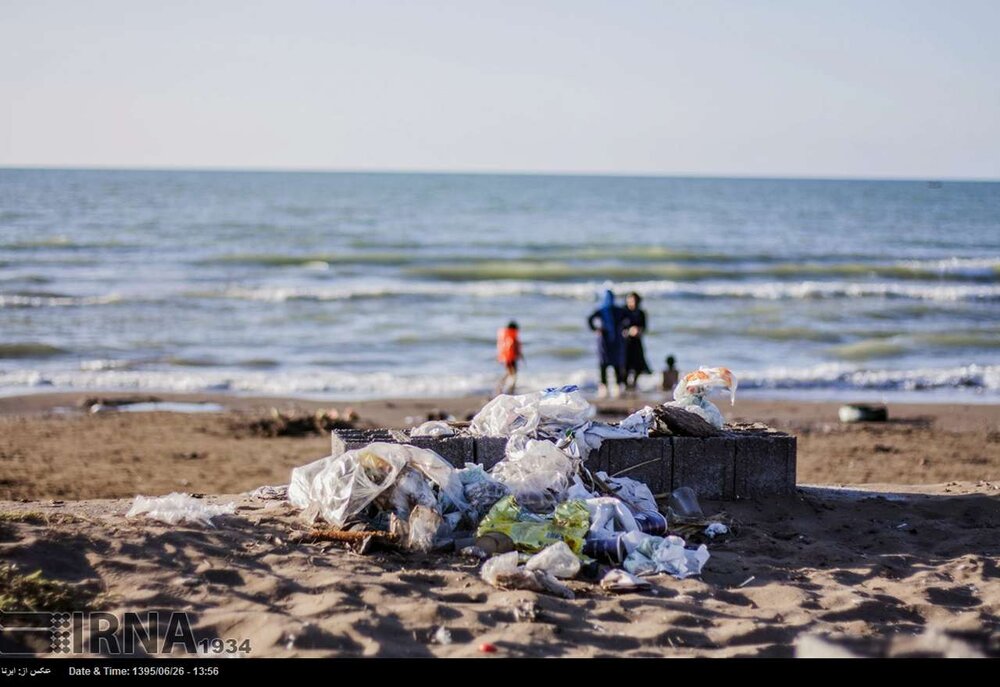Gov. allocates $40m for waste management

TEHRAN – The government has earmarked $40 million for waste management to prevent waste generation with priority given to the country's coastal provinces, Ahmad Reza Lahijanzadeh, deputy chief of the Department of Environment (DOE) for the marine environment, said.
He made the remarks during the second International Conference on Oceanography in West Asia held virtually in Tehran on September 16 to 17.
The main purpose of this fund allocation is preventing waste generation, followed by reuse, recycling, recovery and as a last resort, safe disposal with the priority of the coastal provinces, he stated.
He went on to note that according to the United Nations Environment Program, 300 million tons of plastic waste is generated each year, of which, about 8 million tons enter the oceans. In 2015, the estimated damage caused by marine pollution to the fishing and aquaculture, maritime transport, shipbuilding, and maritime tourism industries in the Asia-Pacific Economic Cooperation, was $11.2 billion.
In recent years, plastics have accumulated in the Pacific, Atlantic, and Indian Oceans, with 80 percent of the waste entering the ocean from land. Some 15 percent floating at the sea surface, 15 percent goes under the sea and 70 percent is buried under the sea bed, so a small part of the sea waste is seen, and that is a real catastrophe.
Many actions against waste are underway worldwide, but given the $180 billion investment in the plastics industry over the past decade and the increasing consumption of disposable plastic products due to the coronavirus epidemic, we need to work even harder and more accurately, he added.
Being the center of the world's main energy storage, and having huge resources of oil and gas and related industries, coastal parts of Iran are exposed to domestic sewage, industrial wastewater, oil spills and oil extraction that have caused serious pollution in the maritime environment, he explained.
Among the various fishing methods, trawl fishing and other types of non-selective fishing equipment, hurt the sea bed and overfishing cause serious damage to other aquatic animals and the marine environment, he stated, noting, its destructive effects on the marine environment have been widely discussed so that we have completely restricted and almost banned this type of fishing.
Emphasizing the need for more investment in research and monitoring in order to provide comprehensive information on the characteristics of marine and coastal environments, he said that for example, we can refer to research programs in physical, chemical, and biological systems and processes.
This data set provides the basis for the assessment, as preserving biodiversity in waters requires effective rules and regulations based on coherent scientific research programs, he also added.
In this regard, we need to implement a priority program for mapping and studying marine species and habitats, the DOE signed a contract with the National Institute of Oceanography and Atmospheric Sciences, as well as the Fisheries Organization for continuous physical and chemical monitoring of the Persian Gulf, the Sea of Oman and the Caspian Sea, he highlighted.
We can benefit from its various advantages while strengthening the marine and coastal environment as well as economic activities in order to achieve sustainable development, he concluded.
7,000 tons of waste generated daily in northern provinces
Sirous Vatankhah, secretary of energy technologies development headquarters at Science and Technology Vice-presidency, has said that the amount of waste generated in the northern provinces of the country, neighboring the Caspian Sea, is snowballing at a rate of over 7,000 tons a day, accounting for 14 percent of the total daily 50,000 tons of waste produced in the country.
There is a significant relationship between the prevalence of various diseases and the amount of waste generation, which must be considered a "danger sign" that needs urgent measures to contain the issue, he highlighted.
Waste generation per capita in Iran
In Iran, over 1 million tons of plastic bags are produced annually, while its shelf life is less than 10 minutes, but they remain in nature for hundreds of years. Recently, the Department of Environment has drafted a bill and sent it to the government for approval to reduce the consumption of plastic bags.
Sadr-o-din Alipour, the director of the environment and sustainable development department of Tehran Municipality, has said that over 3,000 tons of plastic waste are generated per day in the country, which reaches 1 million tons in a year.
Ali Moridi, head of soil and water office at the DOE, said in October 2018 that while reduction of waste generation and separation of waste at source are the two major processes in waste management, in Iran the focus is mainly on the last phase of waste management which is waste disposal, which will slow down the path to waste minimization and waste sorting at source.
Although proper waste management could solve the country's environmental problems, the budget requested by the DOE for waste management has not been approved by the Majlis [Iranian parliament], he lamented.
According to a report published by United Nations Industrial Development Organization (UNIDO) in October 2016, waste generation per capita in Iran’s urban areas is about 658 grams per day while Iranian waste generation per capita in rural areas is about 220-340 grams per day. Average Iranian waste generation per capita amounts to some 240 kilograms per year.
The report continues that unfortunately only 7 percent of the waste is separated at the source, 13 percent is recycled and only 2.5 percent of them end up in formal or sanitary landfills and some 77.5 percent of the waste will be burnt or buried in informal landfills located in the countryside or deserts near cities.
FB/
Leave a Comment